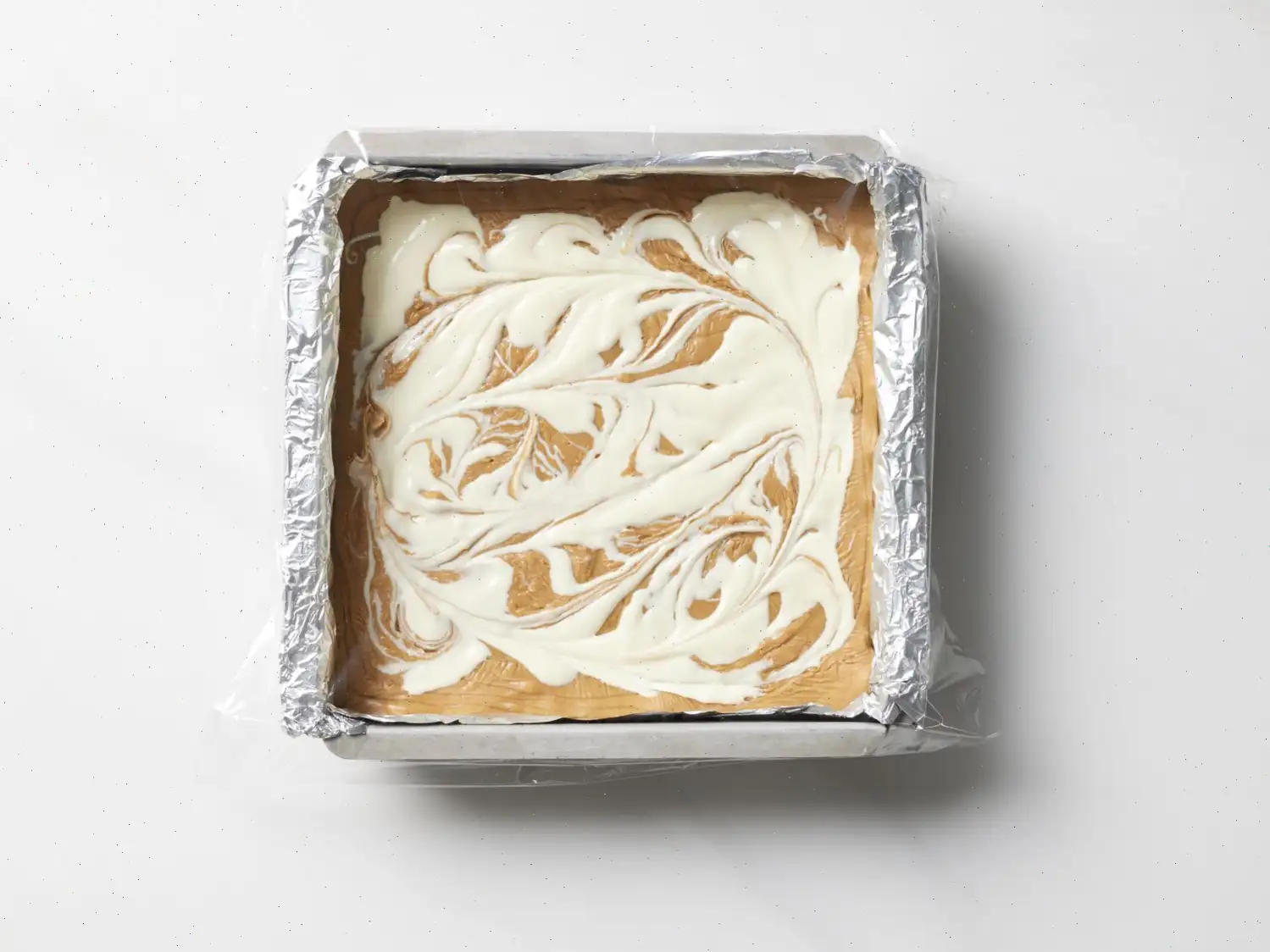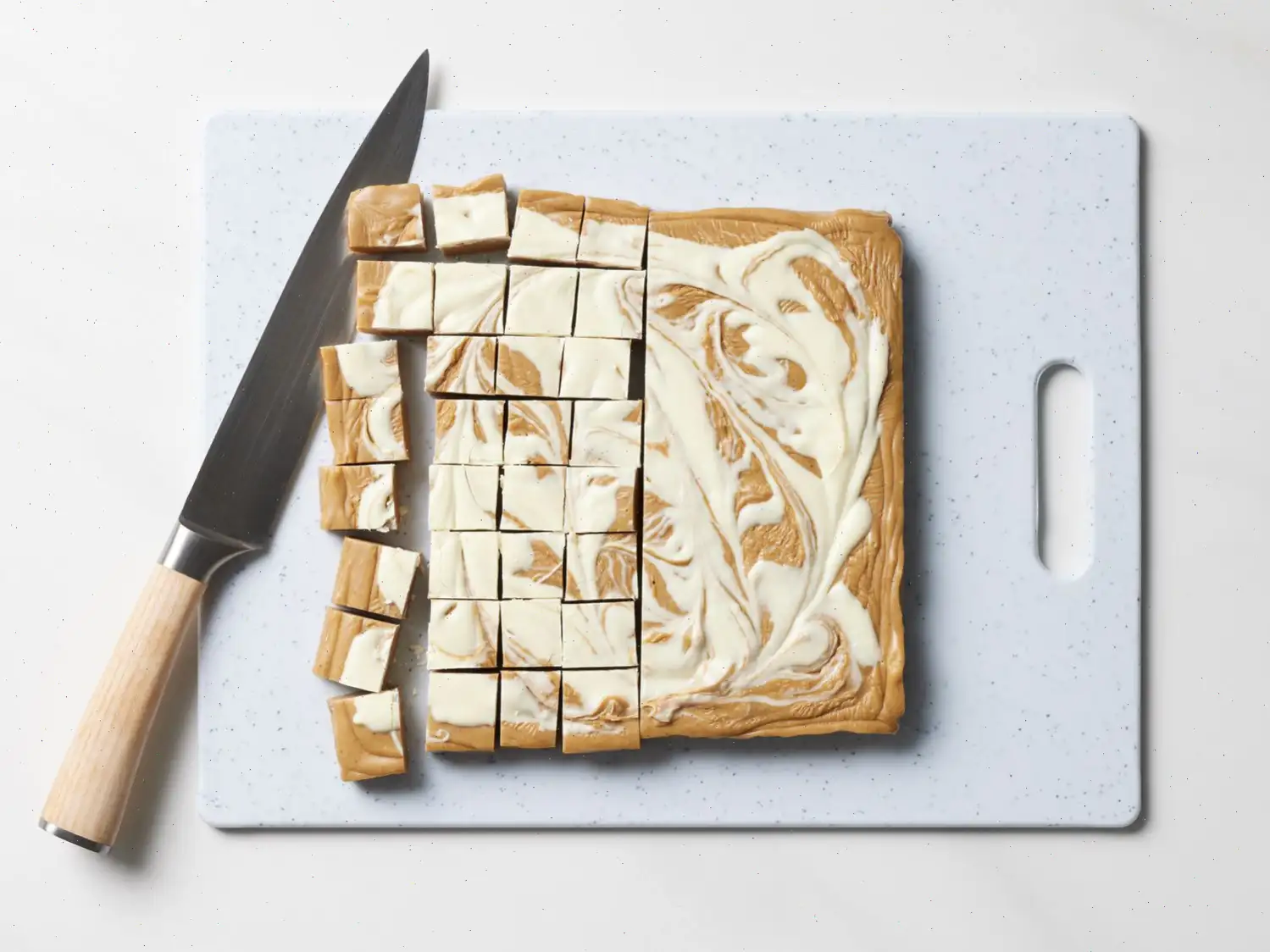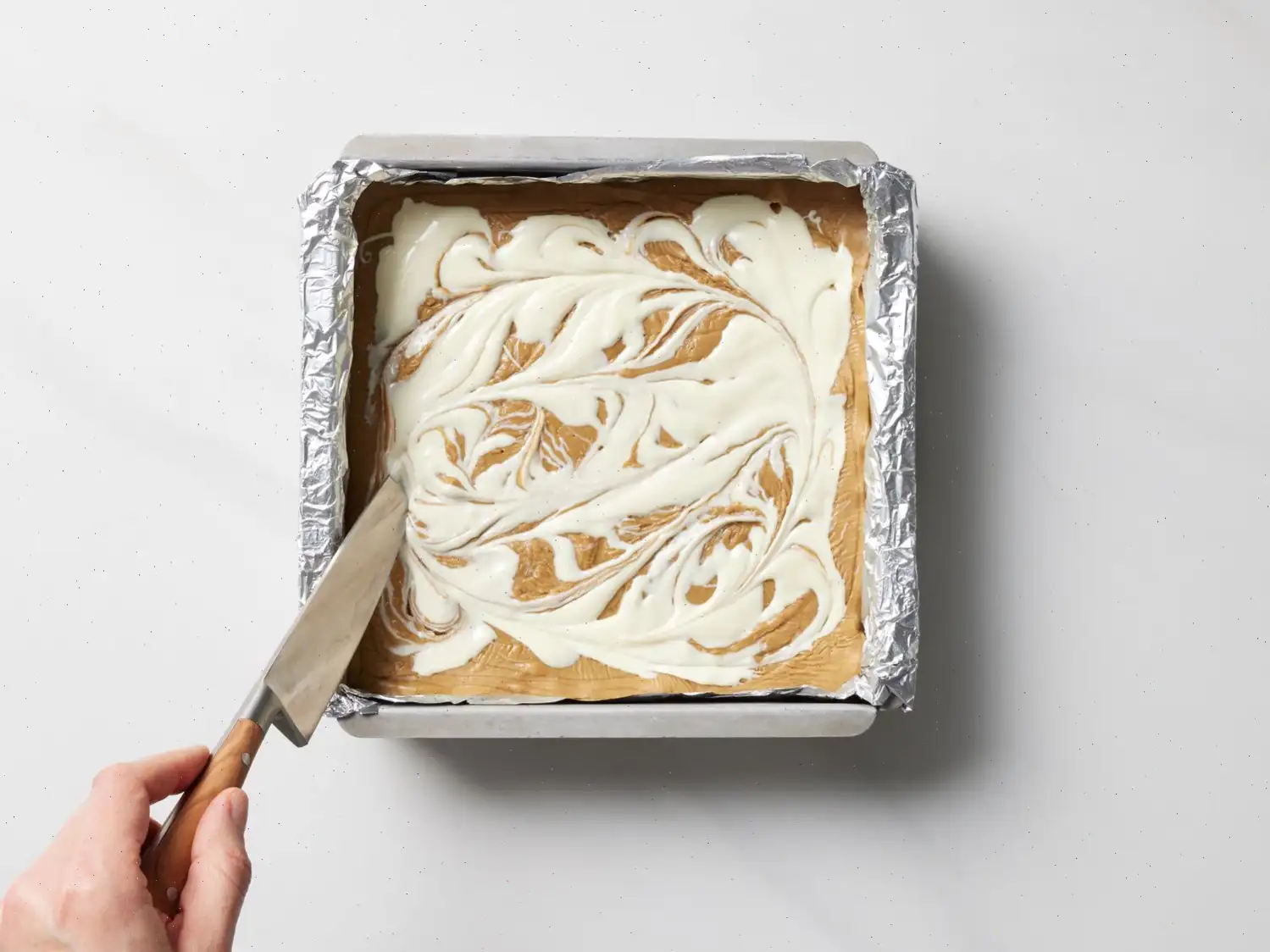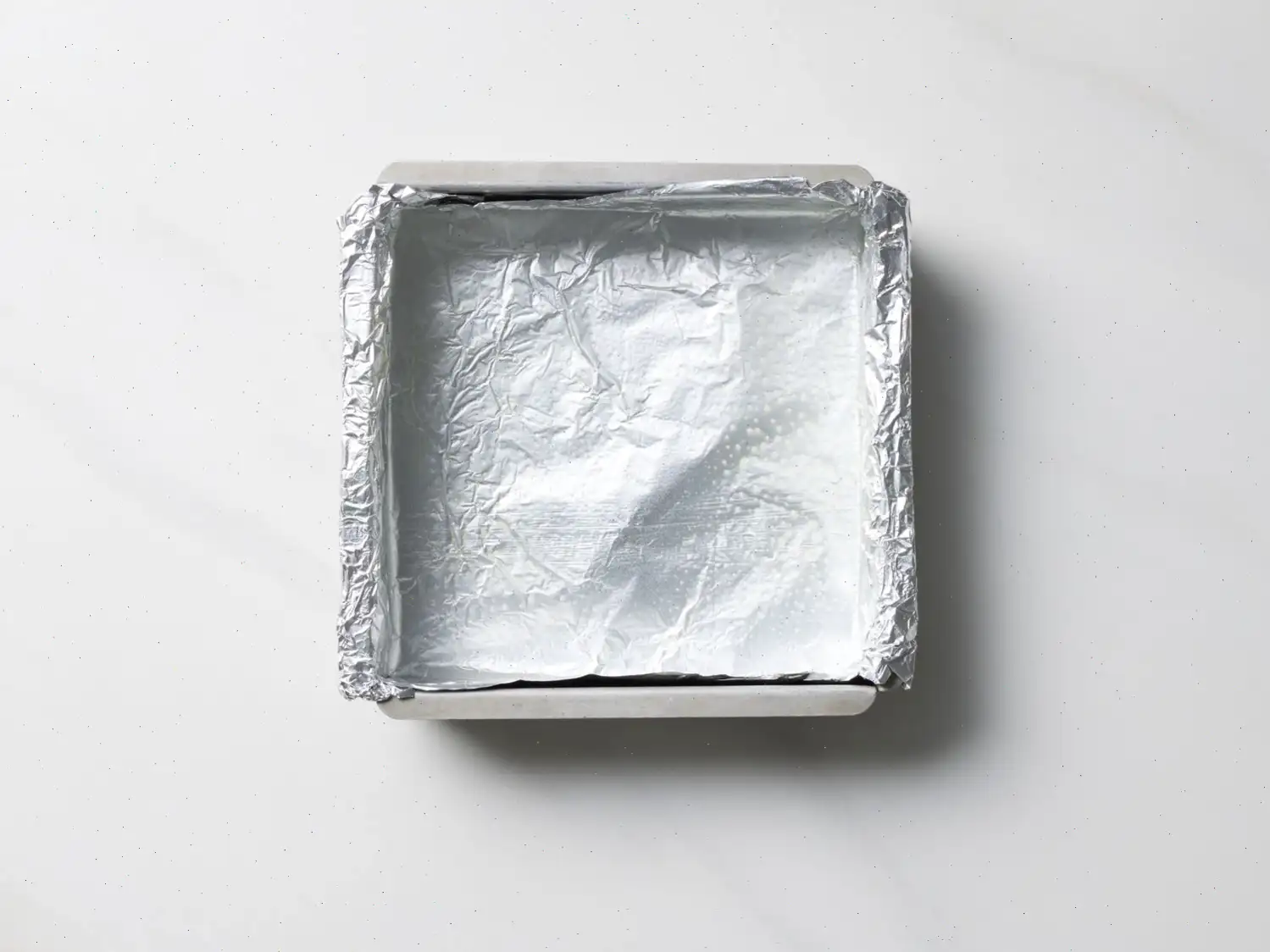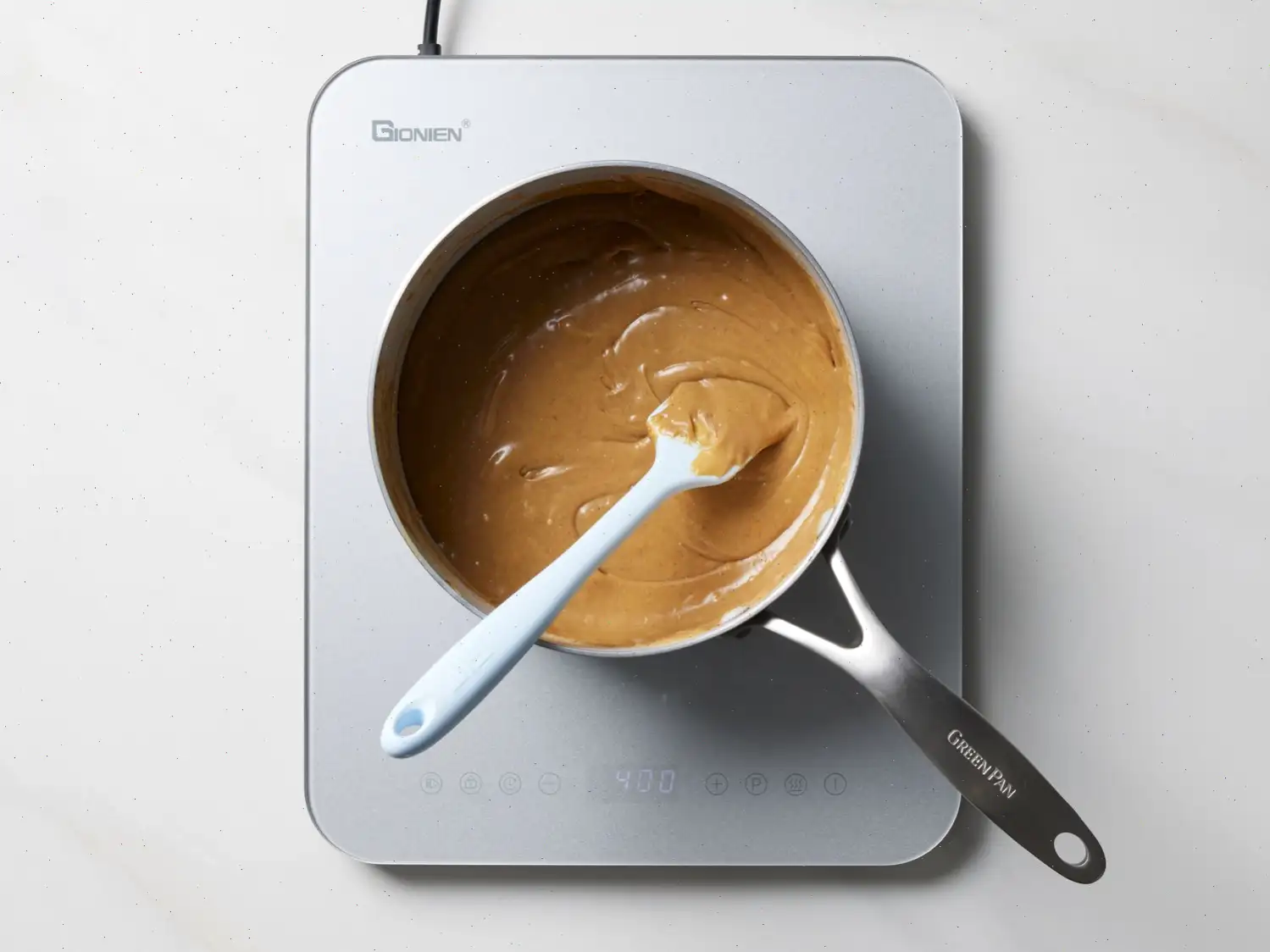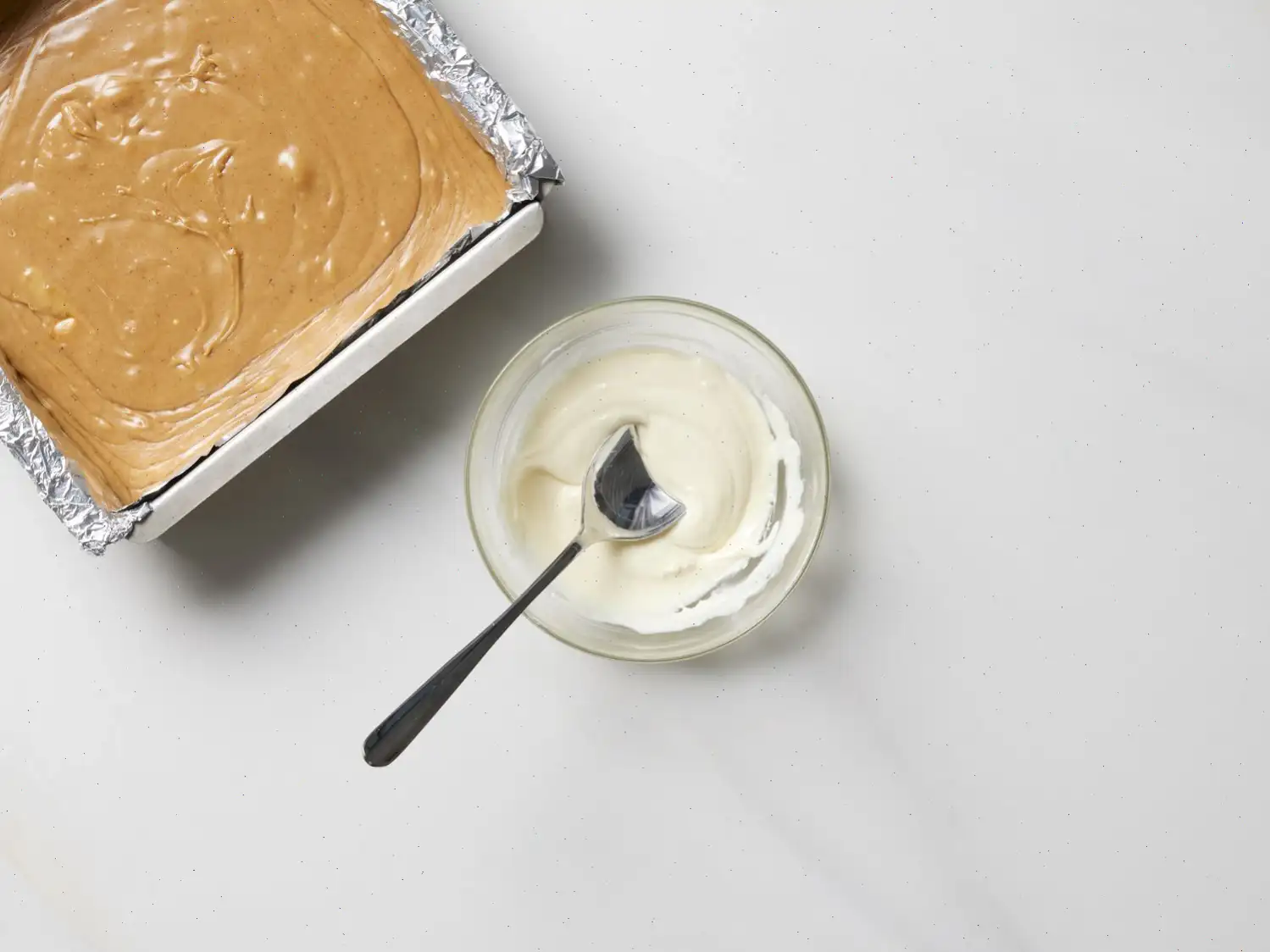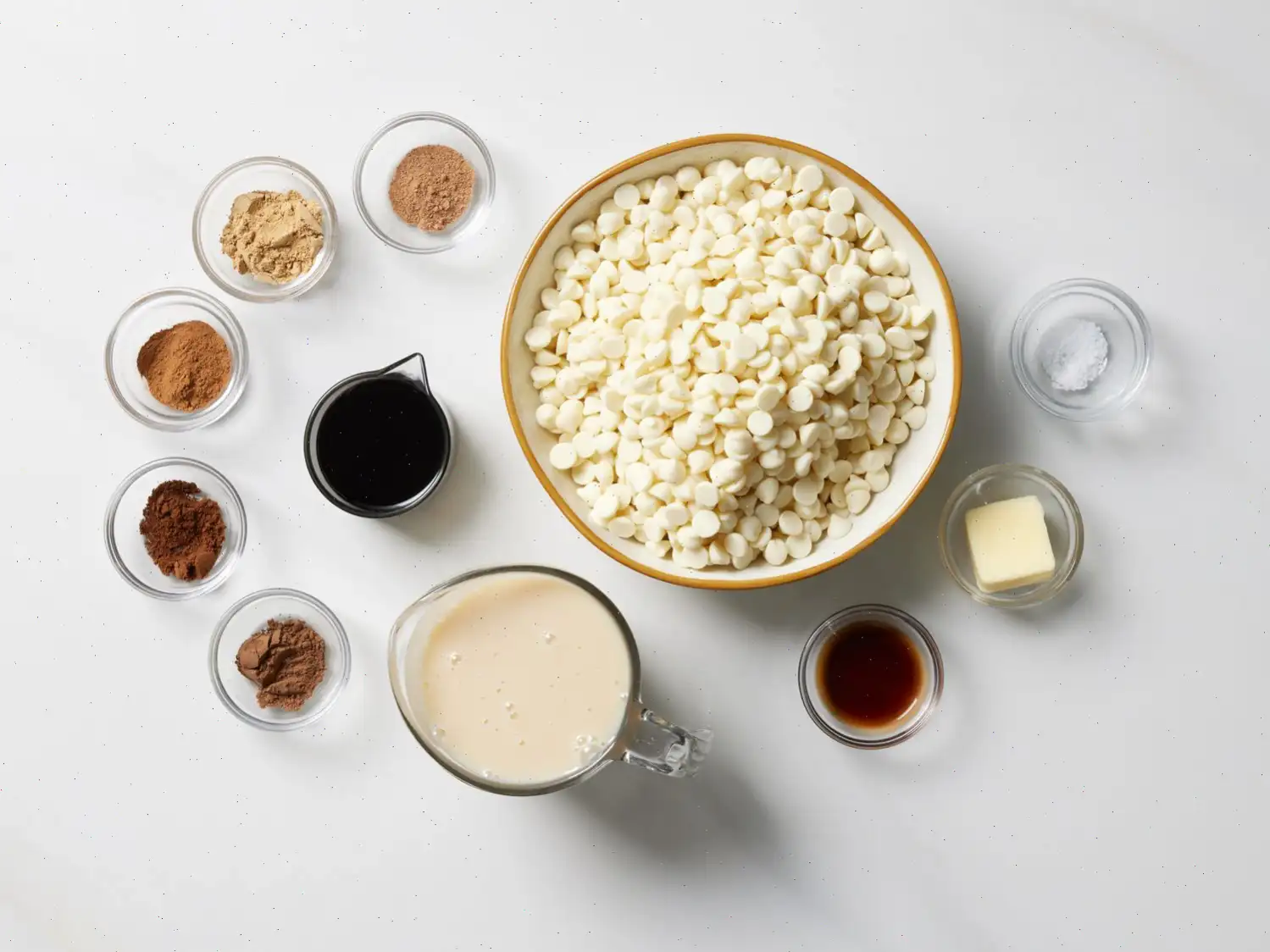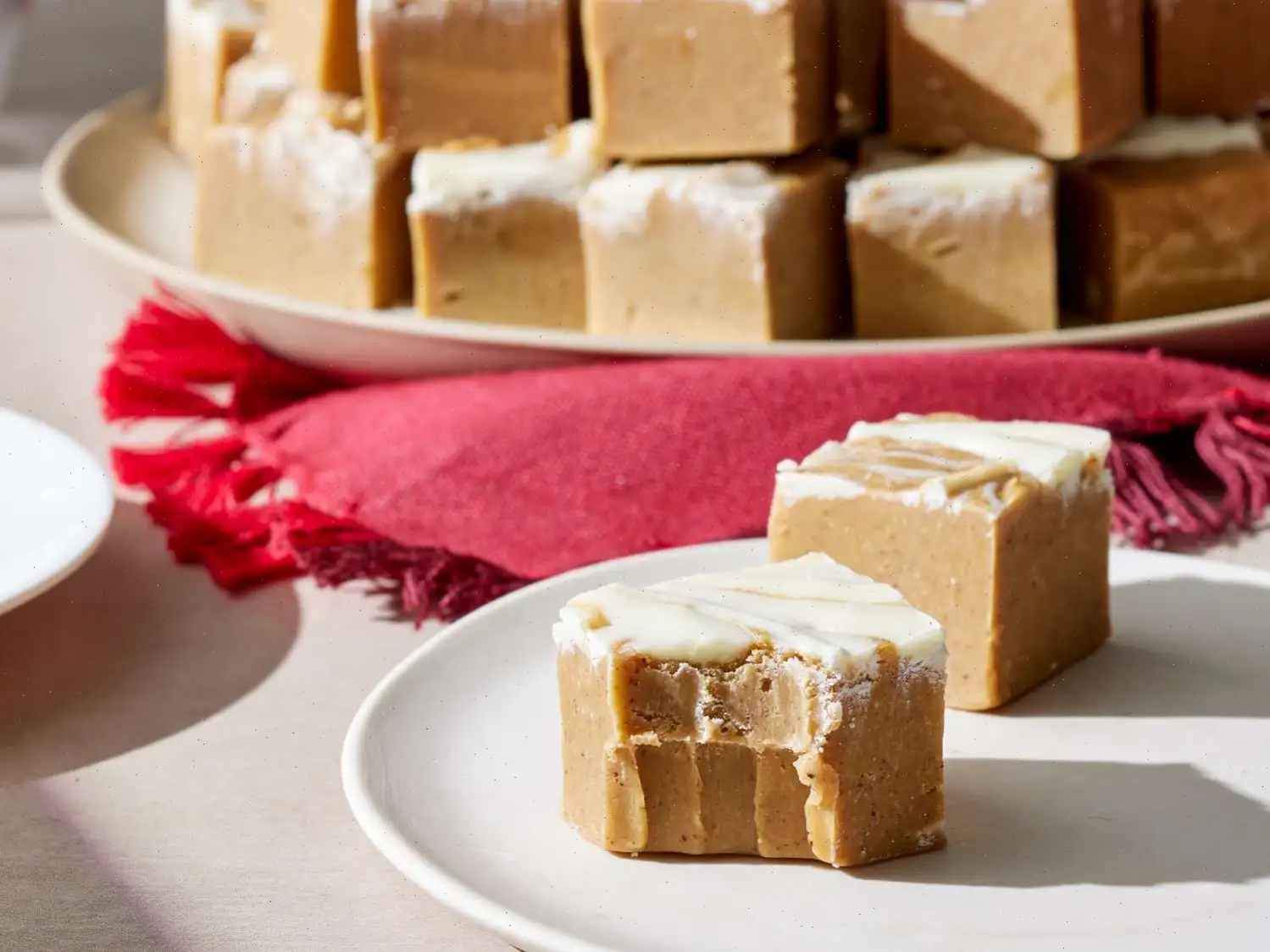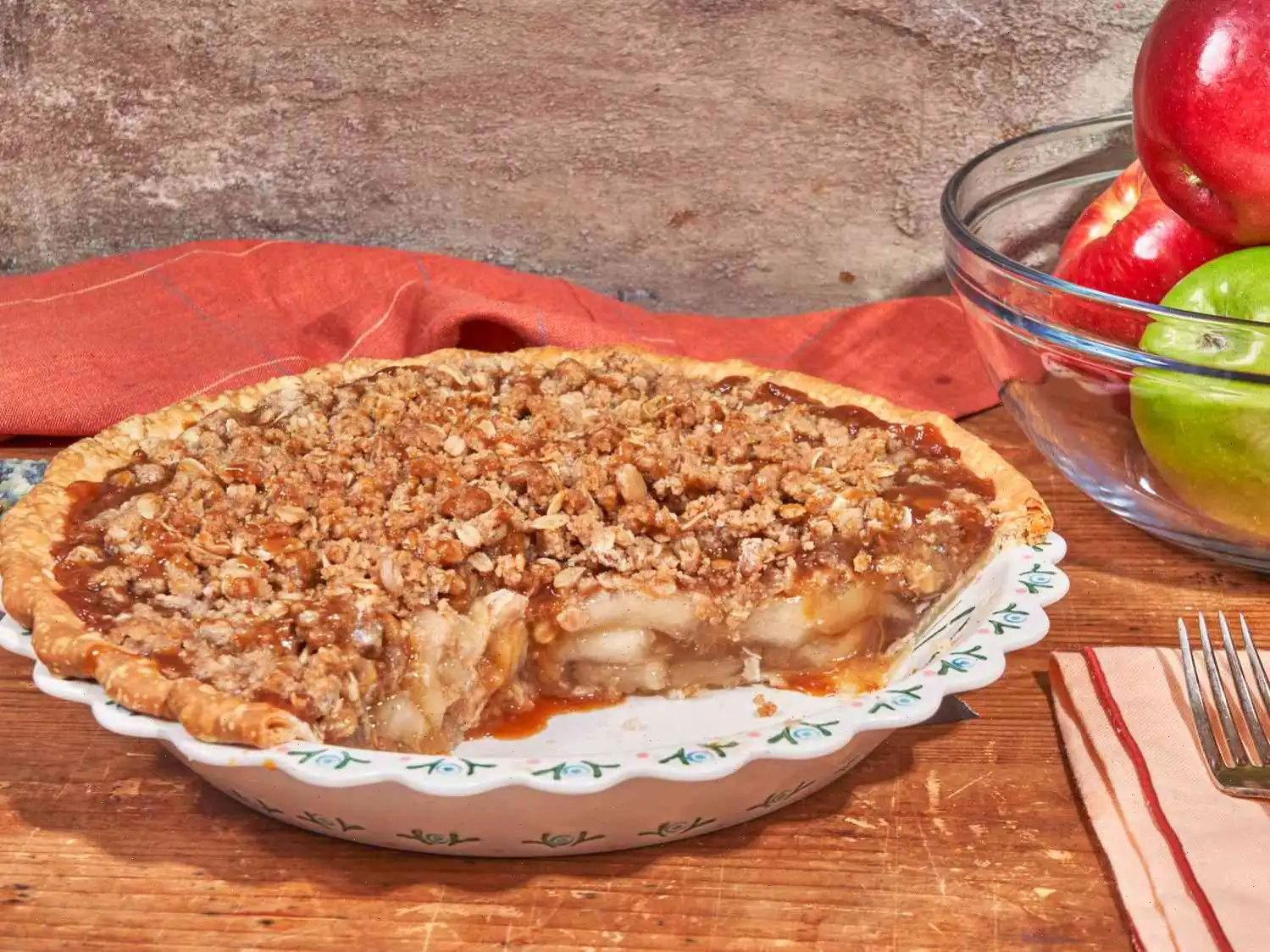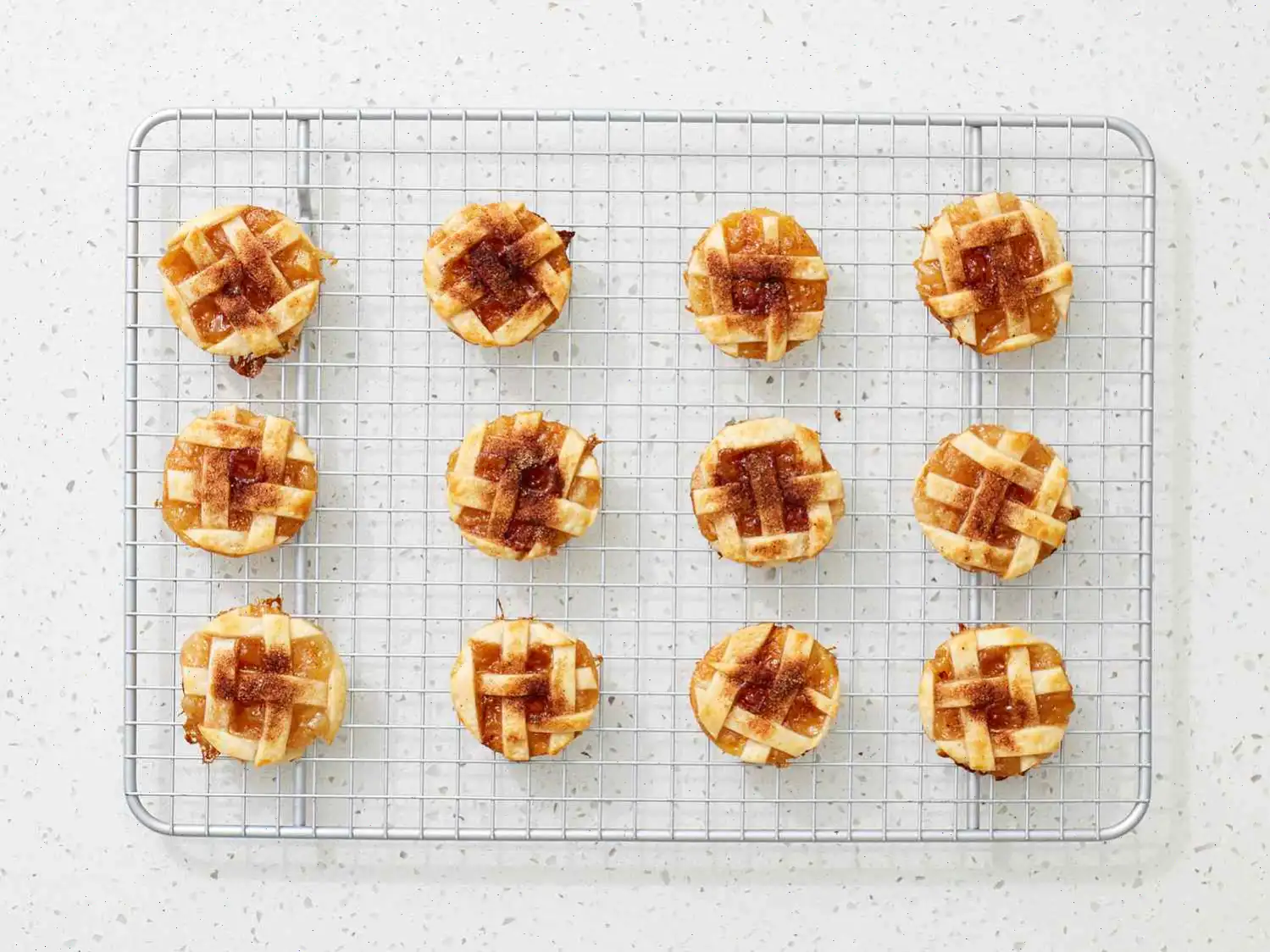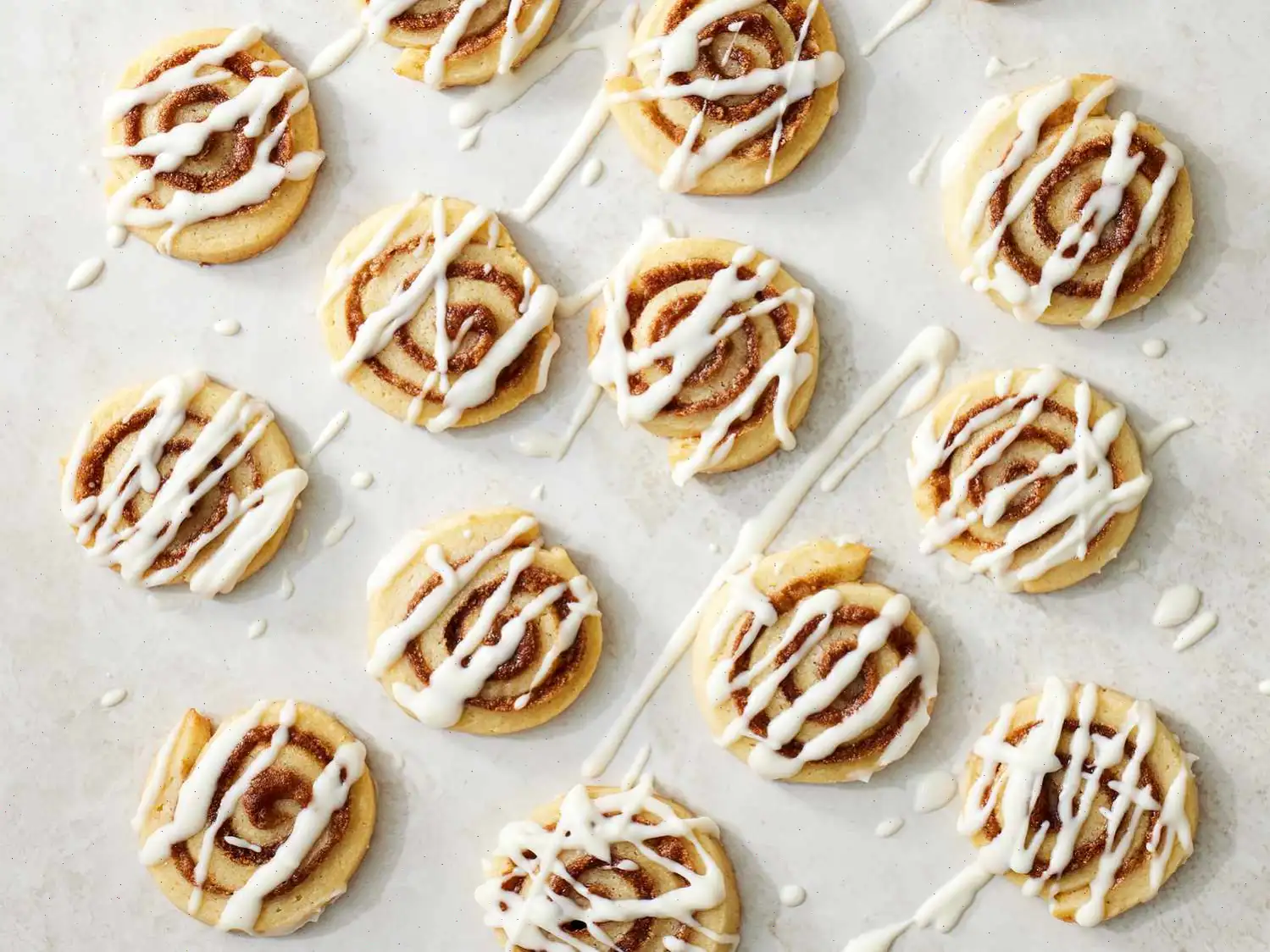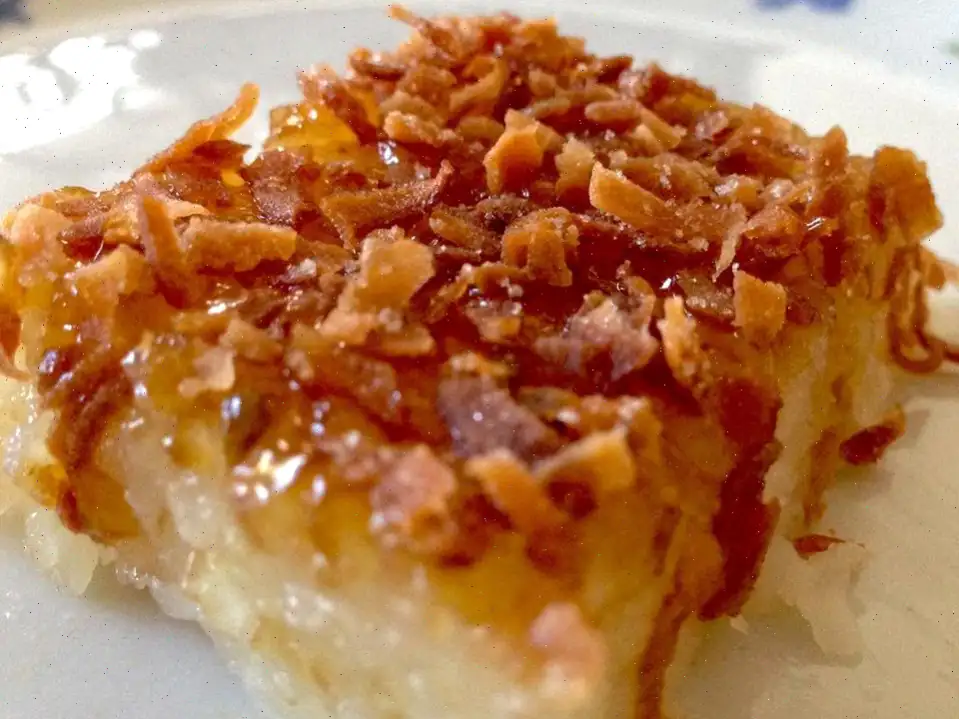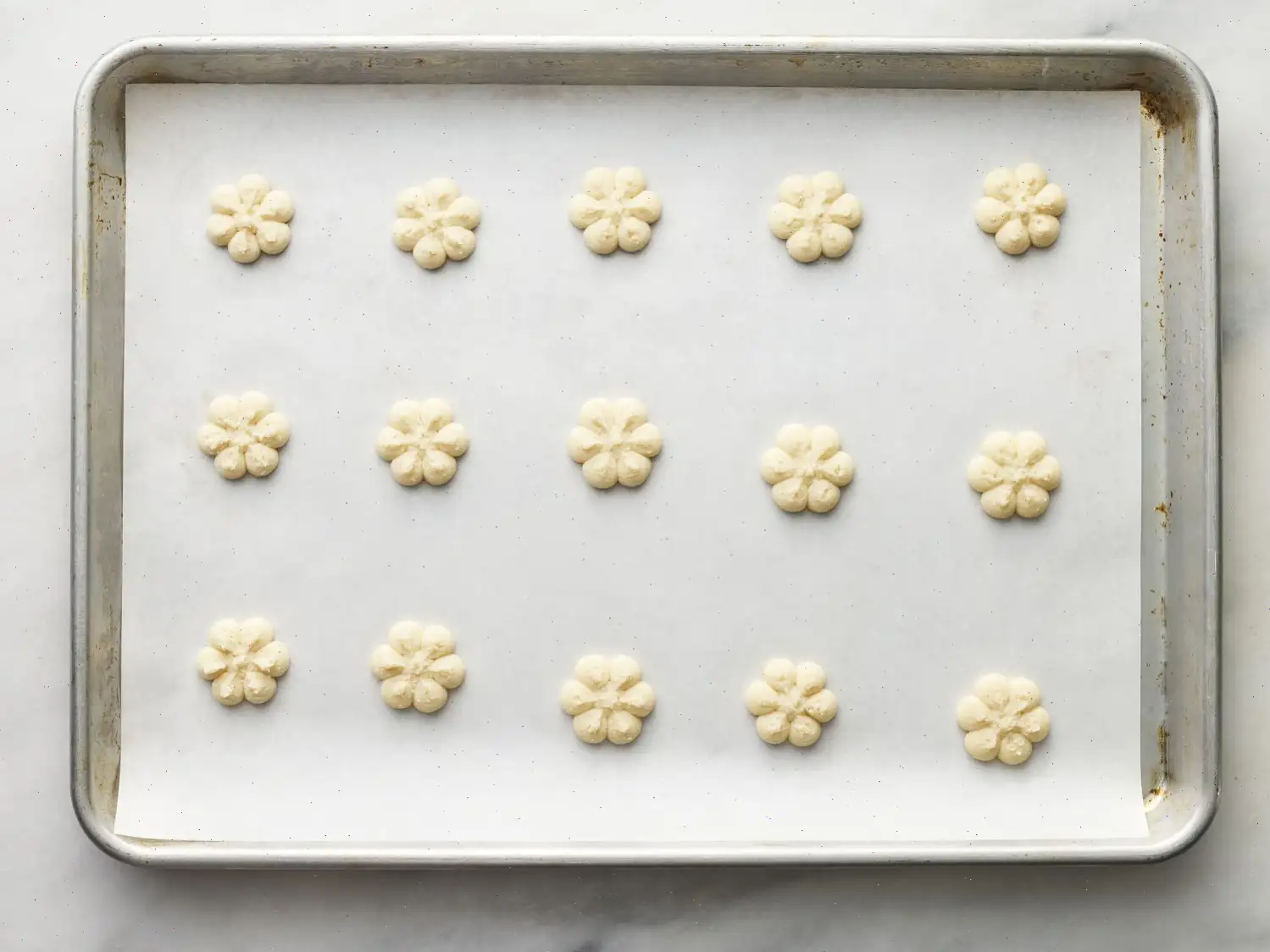
Gingerbread Fudge Recipe
Ingredients
- 2 (11-ounce) packages premium white chocolate chips
- 1 (14-ounce) can sweetened condensed milk
- 1/4 cup molasses
- 1 tablespoon butter
- 2 teaspoons vanilla extract
- 2 teaspoons ground ginger
- 1 1/2 teaspoons ground cinnamon
- 1/2 teaspoon ground nutmeg
- 1/2 teaspoon ground allspice
- 1/2 teaspoon ground cloves
- 1/8 teaspoon salt
Directions
- Gather all ingredients and prepare your tools for easy access.
- Line an 8x8-inch baking pan with aluminum foil. Lightly grease or butter the foil, then set the pan aside.
- Set aside 1/2 cup of the white chocolate chips. In a saucepan over medium heat, combine the remaining white chocolate chips, sweetened condensed milk, molasses, and butter. Stir frequently until the butter and chocolate are fully melted and the mixture is smooth.
- Once the mixture is smooth, add the vanilla extract, ground ginger, cinnamon, nutmeg, allspice, cloves, and salt. Stir well to combine all ingredients evenly.
- Pour the fudge mixture into the prepared pan, smoothing it out evenly with a spatula.
- In a small microwave-safe bowl, place the reserved 1/2 cup of white chocolate chips. Microwave in 30-second intervals, stirring between each, for about 1 to 1 1/2 minutes, or until melted.
- Spoon small dollops of the melted white chocolate over the fudge mixture. Use a knife or a toothpick to gently swirl the two mixtures together, creating a marbled effect.
- Cover the pan and place it in the refrigerator to chill for about 2 hours, or until the fudge has firmed up completely.
- Once chilled, lift the uncut fudge out of the pan using the foil. Cut into 1-inch squares and serve.
Nutrition Facts (per serving)
| Calories | 86 |
| Total Fat | 4g (5% Daily Value) |
| Saturated Fat | 2g (12% Daily Value) |
| Cholesterol | 5mg (2% Daily Value) |
| Sodium | 25mg (1% Daily Value) |
| Total Carbohydrate | 11g (4% Daily Value) |
| Dietary Fiber | 0g (0% Daily Value) |
| Total Sugars | 11g |
| Protein | 1g (2% Daily Value) |
| Vitamin C | 0mg (0% Daily Value) |
| Calcium | 47mg (4% Daily Value) |
| Iron | 0mg (1% Daily Value) |
| Potassium | 80mg (2% Daily Value) |
Servings per Recipe: 64
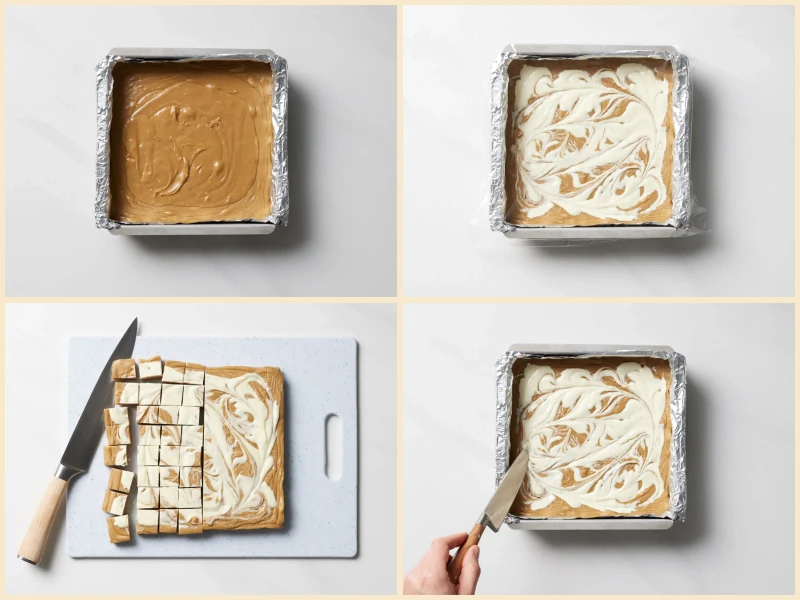
The Origins of Gingerbread Fudge
Gingerbread fudge, a delightful twist on classic fudge, draws inspiration from the long-standing tradition of gingerbread, which dates back to medieval Europe. Originally, gingerbread referred to preserved ginger confectionery, but over the centuries, it evolved into spiced cakes and cookies, especially popular during the winter holidays. The fusion with fudgea rich, creamy candy first popularized in the United States in the late 19th centuryemerged as home cooks sought festive, flavorful variations of traditional sweets. Gingerbread fudge combines the warm, aromatic spices of gingerbread with the smooth texture of creamy white chocolate fudge, creating a seasonal treat that has captured the hearts of dessert enthusiasts worldwide.
Regional Variations
While the classic recipe for gingerbread fudge is primarily American, regional adaptations exist. In Northern Europe, especially Germany and Scandinavia, spicier versions incorporate cardamom or anise in addition to the traditional ginger, cinnamon, and cloves. In the United States, some recipes use molasses, as in this recipe, to provide a deeper, richer flavor reminiscent of Southern-style gingerbread cakes. Holiday markets across Europe and North America often showcase local versions of this candy, sometimes incorporating nuts or drizzles of dark chocolate for added complexity.
Distinguishing Features Compared to Similar Desserts
Gingerbread fudge differs from other spiced sweets, such as gingerbread cookies or pumpkin fudge, in both texture and flavor layering. Unlike gingerbread cookies, which are dry and firm, the fudge is soft, creamy, and melts in the mouth. Compared to traditional chocolate fudge, it is lighter in color and has a more complex spice profile, featuring ginger, cinnamon, nutmeg, allspice, and cloves. This combination of spices gives the fudge a signature warm, slightly sharp flavor that complements the sweetness of white chocolate, making it uniquely festive.
Typical Serving Context
Gingerbread fudge is most commonly served during the holiday season, particularly at Christmas gatherings, winter parties, and festive bake sales. It is often presented in small squares on decorative trays, making it ideal for gifting. Some households include it in assorted candy platters alongside peppermint bark, chocolate truffles, and traditional fudge varieties. Its elegant appearance, with swirled white chocolate on top, also makes it a popular choice for dessert tables at winter weddings and seasonal events.
Interesting Facts
- The first known gingerbread recipe dates back to 11th-century France, where it was used for medicinal purposes.
- Fudge became popular in the United States in the 1880s, with many original recipes discovered in letters between young women exchanging confectionery tips.
- The swirl pattern in gingerbread fudge is not only decorative but also allows for a balanced combination of spiced and sweet layers in each bite.
- Molasses, a key ingredient, is a byproduct of sugar production and was historically valued for its long shelf life, which made it ideal for winter treats.
- Despite being rich and sweet, gingerbread fudge is relatively low in calories per small serving, making it a manageable indulgence for holiday snacking.
FAQ about Gingerbread Fudge Recipe
Comments
Edward Martin
09/18/2024 11:55:22 AM
I absolutely adore it!



